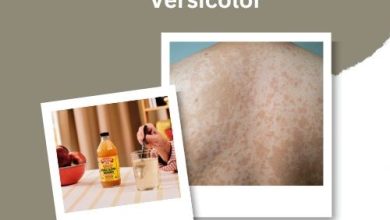Top Sebaceous Cyst Eyelid Treatment Options You Can Try at Home—#3 Works Fast!

A sebaceous cyst on your eyelid can make you feel uncomfortable, self-conscious, and worried about your eye health. You might notice a small, round lump under the skin, a yellowish spot on the eyelid, or swelling that feels tender if infection develops. These cysts often form when oil glands in the eyelid become blocked, but their appearance can still feel alarming if you have never had one before.
You through safe and effective ways you can try at home to ease discomfort and help your eyelid heal. As a medical professional and experienced content strategist, I will explain each step in clear, accessible language, while also sharing practical advice to help you feel more confident in your care routine.
These home remedies do not replace professional treatment, especially if the cyst grows, becomes painful, affects your vision, or continues to return. However, they can help you manage symptoms, support healing, and reduce the chances of future irritation.
What You Need to Know About a Sebaceous Cyst on the Eyelid
A sebaceous cyst of eyelid tissue forms when the duct of an oil-producing gland becomes blocked. Your eyelids contain numerous sebaceous glands that produce an oily substance called sebum. Sebum protects the eye surface, prevents dryness, and keeps eyelashes healthy. When the duct gets obstructed by dead skin cells, debris, or inflammation, the trapped sebum forms a small sac under the skin.
You can develop:
- A sebaceous eyelid cyst on the upper or lower lid
- A sebaceous cyst around eye tissue close to the lashes
- A sebaceous cyst in eye areas involving meibomian glands
- An eyelid sebaceous cyst that feels firm when you press lightly
- An eye sebaceous cyst that becomes red or swollen if infection sets in
These cysts often stay small and painless. Some shrink on their own within days or weeks. Others persist because the trapped oil cannot escape without either natural drainage or intervention.
A sebaceous cyst eyelid treatment plan focuses on:
- Reducing inflammation
- Helping the blocked oil soften
- Encouraging natural drainage
- Preventing infection
- Keeping the eyelid area clean and irritation-free
If the cyst becomes infected, infected sebaceous cyst removal may require medical care, but early self-care can sometimes stop the problem before it reaches that stage.
Related Article: Best 16 Home Remedies To Treat Sebaceous Cyst
1. Warm Compresses: The Most Effective First Step
Applying gentle heat is one of the simplest and most reliable home remedies for a sebaceous cyst on the eyelid. Heat helps liquefy the trapped sebum, softens the skin, and increases local blood flow. This encourages the cyst to drain naturally through the blocked opening.
How to do it safely
- Soak a clean cloth in warm (not hot) water.
- Squeeze out excess water.
- Place the cloth over your closed eyelid for 10–15 minutes.
- Repeat 3–4 times a day.
You should feel gentle warmth—not burning or stinging. Always keep your eyes closed and avoid pressing hard on the cyst.
Why it helps
Warm compresses relax eyelid tissue, reduce swelling, and loosen the contents of the cyst. If you stay consistent, many small cysts improve noticeably within a few days.
What to expect
- A reduction in firmness
- A more relaxed feeling in the eyelid
- Decreased puffiness
- Less discomfort
This remedy is safe for most people, including those with sensitive skin.
Related Article: Get Rid of Sebaceous Cyst with the Use of 5 Natural Remedies
2. Eyelid Hygiene: Keep the Area Clean to Prevent Irritation
Your eyelids naturally attract oil, skin cells, sweat, and environmental irritants. If you have a sebaceous eyelid cyst or a sebaceous cyst around eye areas, regular cleaning helps prevent further blockage and reduces the risk of infection.
Safe cleaning routine
- Wash your hands first.
- Use a cotton pad or clean cloth.
- Dip it in warm water mixed with mild baby shampoo or a recommended eyelid cleanser.
- Gently clean the eyelid margin, especially near the lashes.
- Rinse with clean water and pat dry.
Avoid makeup and contact lenses until the cyst improves.
Why eyelid hygiene matters
A clean eyelid reduces bacteria, removes excess oil, and prevents the cyst from worsening. It also supports the effect of warm compresses by keeping the skin free of debris that can slow healing.
3. Warm Oil Massage: A Soothing Method That Works Quickly
This method is gentle and surprisingly effective, especially for small to moderate cysts. Warm oil can soften trapped sebum, nourish eyelid skin, and reduce irritation.
This is the exact point where I will include your mandatory internal link phrase:
👉 Top Sebaceous Cyst Eyelid Treatment Options You Can Try at Home—#3 Works Fast!
How to perform warm oil massage
- Choose a light, safe oil (coconut, olive, or castor oil).
- Warm a small amount between your fingers.
- Apply lightly to the eyelid (avoid direct contact with the eye).
- Massage in slow circular motions for 30 seconds.
- Follow with a warm compress.
Why it helps
Warm oil loosens hardened sebum and makes it easier for the cyst to drain naturally. It also reduces dryness or tightness around the cyst.
Who can use this method
Most people can try this at home, but you should avoid it if:
- You have an active eye infection
- Your eye is very swollen
- You are prone to allergic reactions
If irritation develops, stop immediately.
4. Over-the-Counter Options to Reduce Discomfort
Some non-prescription remedies can support healing while reducing irritation linked to a sebaceous cyst in eye tissue or a sebaceous cyst of eyelid glands.
- Lubricating eye drops
These can ease dryness caused by swelling or pressure on the eye. Use preservative-free drops if you have sensitive eyes.
- Anti-inflammatory gels around the eyelid
(This should never go inside the eye.)
These gels can soothe redness and mild swelling around the cyst.
- Warm compress eye masks
These retain heat better than cloths and can make treatment more convenient.
- Gentle skin-safe antiseptic wipes
Useful for removing bacteria from the surrounding skin.
Always read product instructions carefully, and avoid anything that is not labelled safe for use near the eyes.
5. Natural Remedies That Some People Find Helpful
While not every natural remedy is backed by strong clinical evidence, many people report relief from specific ingredients known for their soothing or anti-inflammatory effects.
Aloe vera gel
A thin layer applied around (not inside) the eyelid can reduce redness and irritation.
Chamomile
A cooled chamomile tea bag placed over the closed eyelid may calm the skin.
Green tea
Green tea contains natural antioxidants that may help reduce swelling. Use a cooled tea bag as a compress.
Tea tree oil (only diluted)
This option must be used with extreme caution. Pure tea tree oil can burn the skin and should never come near the eye. If you dilute it properly and apply only to the outer eyelid skin, it may reduce bacteria.
Castor oil
Some people find castor oil helpful for softening the skin and supporting drainage. Use sparingly and keep it away from the eye surface.
If you notice irritation from any natural product, wash the area and stop use.
6. What You Should Never Do to a Sebaceous Cyst on the Eyelid
To protect your eyes and avoid complications, avoid these common mistakes:
Do not squeeze the cyst
Applying pressure can damage the delicate eyelid skin, force bacteria deeper, or trigger infection.
Do not attempt home surgical methods
Sharp tools, needles, or pins carry a high risk of scarring or severe infection.
Do not use harsh skincare acids
Acids such as glycolic, salicylic, or retinoids can irritate the thin eyelid skin.
Do not apply makeup over the cyst
Makeup can block pores further and increase irritation.
Do not ignore signs of infection
If you notice pus, increasing redness, or severe swelling, seek medical attention promptly.
Your eyes are extremely sensitive, so gentle care and patience are essential.
7. How to Tell If the Cyst Is Infected
An infected sebaceous cyst removal may require medical support, so keep an eye on the following signs:
- Increased redness or warmth around the eyelid
- Significant swelling
- Pus or yellow discharge
- Throbbing pain
- Fever (rare but possible)
- Difficulty opening the eye
- Impaired vision
If any of these symptoms appear, do not rely on home remedies alone. You may need antibiotic ointment, oral antibiotics, or professional drainage.
8. When Home Remedies Are Not Enough
Most small cysts respond to warm compresses and proper cleansing within one to two weeks. However, you may need to see a doctor if:
- The cyst persists for several weeks
- It grows larger
- It blocks your vision
- It becomes infected repeatedly
- It feels painful
- The swelling spreads
- You commonly develop cysts on your eyelids
There are safe and quick in-clinic treatments available.
9. Medical Treatments Your Doctor May Recommend
If home care does not work, or if the cyst becomes infected, your doctor may offer one of the following options.
- Professional drainage
A small incision allows the trapped sebum to drain safely. This procedure is quick and usually painless thanks to local anaesthetic.
- Steroid injection
A steroid injection can reduce inflammation in stubborn cysts and help shrink them.
- Complete removal
For recurring cysts, surgical removal of the cyst wall prevents it from returning.
- Antibiotics
If infection is present, you may receive topical or oral antibiotics to clear the infection before any further treatment.
These procedures are generally safe and effective when performed by a trained eye specialist.
10. Tips to Prevent Future Eyelid Cysts
Once you have had a sebaceous eyelid cyst, you may have a higher chance of developing another unless you take steps to support eyelid health.
Here are preventative measures that genuinely make a difference:
Maintain regular eyelid hygiene
Clean your eyelids gently every day or every few days if you are prone to cysts.
Remove makeup thoroughly
Leftover makeup can block oil glands around the eye.
Avoid old or expired cosmetics
Bacteria can grow in mascara, eyeliner, and cream-based products.
Use warm compresses periodically
A weekly warm compress can prevent oil thickening inside the eyelid glands.
Manage skin conditions
Conditions such as acne or rosacea can increase the likelihood of cyst formation.
Keep your hands away from your eyes
Touching or rubbing the eyelids can transfer bacteria and irritants.
Stay hydrated
Proper hydration keeps the skin soft and supports normal oil production.
11. Frequently Asked Questions About Eyelid Sebaceous Cysts
- How long does a sebaceous cyst on the eyelid last?
A small cyst may disappear within a week. Larger cysts may take several weeks to soften and drain.
- Can a sebaceous cyst go away on its own?
Yes, some cysts drain naturally. Others require warm compresses or medical treatment.
- Is a sebaceous cyst the same as a stye?
No. A stye is a painful, infected gland near the eyelash. A sebaceous cyst contains trapped sebum and usually feels firmer and less painful.
- Can I pop a sebaceous cyst myself?
No. It is unsafe and can lead to infection or scarring.
- Can sebaceous cysts affect vision?
They can interfere with blinking or vision if large, but most remain small.
- Should I worry about cancer?
Sebaceous cysts are almost always harmless. If the cyst changes shape rapidly, bleeds, or develops unusual features, seek medical advice.
Final Thoughts
A sebaceous cyst on the eyelid can feel irritating and unsightly, but most cysts respond well to simple at-home measures such as warm compresses, gentle cleansing, and supportive care. The key is to remain consistent and avoid anything that may irritate the delicate eyelid skin.
If your cyst becomes painful, infected, or stubborn, professional treatment can clear the problem quickly and safely.




